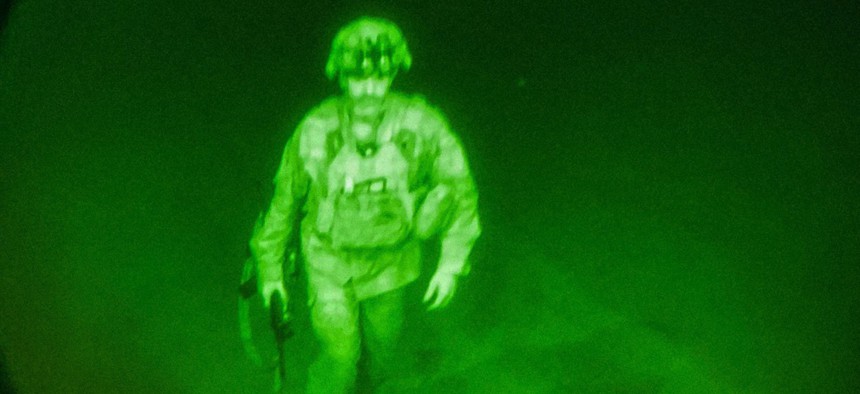Source Link

The final hours of the 20-year war in Afghanistan were some of the most dangerous.
“The security perimeter was steadily collapsing around the planes” at Hamid Karzai International Airport, a defense official said on the condition they not be named.
The emergency airlift operation that began Aug. 14 had become the largest ever executed by the U.S. military. More than half of the U.S. Air Force’s fleet of 222 C-17 Globemaster IIIs had taking part. As the clock ticked toward Aug. 31, just five airlifters remained on the ground in Kabul, manned by handpicked joint tactical exfiltration crews who were taking care of the last tasks on the ground.
Each crew had a checklist, point-by-point steps everyone had to follow. They messaged each other on mIRC chat to confirm all people were accounted for and each step completed.
Earlier, U.S. forces had disabled all the aircraft, vehicles, and artillery that they would abandon at the airport. Left behind, but inoperable, were 70 MRAPs, 27 Humvees, and 73 aircraft.
“Those aircraft will never fly again,” Gen. Frank McKenzie, head of U.S. Central Command, told reporters by videoconference. “When we go out, they'll never be able to be operated by anyone. Most of them were non-mission-capable to begin with, but certainly they'll never be able to be flown again.”
But they’d left intact several C-RAMs. Those artillery countermeasures had protected the airfield from incoming ISIS-K fired rockets less than 24 hours before, and were the last assets to be disabled.
“They were left operational until the last minute,” the defense official said. “Then forces went around to these assets and took a thermite bomb to them.”
The planes would take off without that protection.
Acting ambassador Ross Wilson, the top U.S. diplomat in Afghanistan, and Army Gen. Chris Donohue, commander of the 82nd Airborne, on the last plane of the five. They were the last U.S. officials to leave Afghanistan. Donohue was the last U.S. service member to board.
“Donahue, one of the last things he did before leaving, was talk to the Taliban commander he’d been coordinating with…about the time we were gonna leave just to let them know that we were leaving,” McKenzie said.
Minutes later the last order on the mIRC chat checklist was directed: “Flush the force.”
With that message, the five Globemasters taxied and completed take-off in under 10 minutes.
At precisely 11:59 p.m. Aug. 30 Kabul time, the final C-17 got off the ground, McKenzie said.
Before the aircraft departed, Donohue sent a final message over mIRC chat: “Job well done, I’m proud of you all.”
An hour later, McKenzie appeared on the big video screen of the Pentagon’s press briefing room.
“Every single U.S. service member is now out of Afghanistan,” he said.
No comments:
Post a Comment